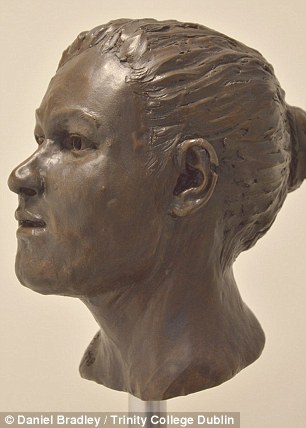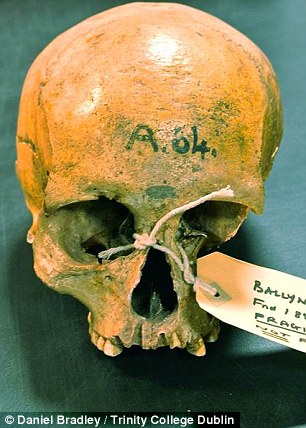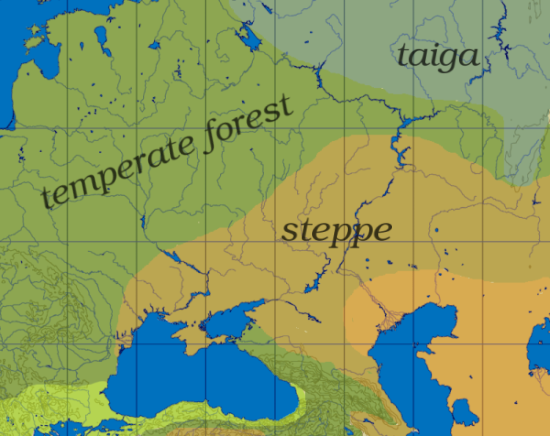The noticeable traits that make Celtic people so distinct are believed to have been established nearly 4,000 years ago. This is most likely due to an influx of people from the Black Sea and the Middle East. A recent analysis has been done on four ancient genomes that were uncovered in Irish people. Archaeologists hope to find the result of the “generic shift” which was caused by an increase of farming and metalwork in the region.
Researchers said that in particular, the adoption of agriculture led to waves of immigration in Ireland. This was when the genetics began to shift.
The genetic study was done by Queens University Belfast and Trinity College Dublin. Researchers analyzed the DNA of a Neolithic farmer, a woman who is believed to have lived in Belfast nearly 5,200 years ago. They also analyzed the DNA of three men found in Rathlin Island in County Down who are believed to have lived 4,000 years ago, in the Bronze Age.

What is interesting is that the woman resembled people from Southern Europe, having black hair and brown eyes, whereas the men had blue eyes. One of the men had even inherited an iron disorder known as haemochromatosis and which is commonly found in Irish people. However, the woman’s genome was considered a “genetic cocktail” from the early hunter-gatherer DNA, which was mixed with Near East farmers.
It is believed that the farmers migrated to the region thousands of years ago, which would have brought farming to the region in around 3,750 BC. However, the genetic traits found in all of the men from the Bronze Age were found to be much closer to the modern Irish people.
Added to the blue eyes, the male genomes include the most common form of the Y chromosome which carries the typical “male” biological traits. This trait also allows the Irish people to digest the protein in milk. It is believed that the later genetic traits, could have been brought by people from the Pontic Steppe, which is the Black Sea region that stretches across modern day Ukraine, Russia, and Georgia.

The authors doing the research said that the first ancient whole genome was from Ireland and demonstrated a large genetic shift accompanied both transitions. A professor at Trinity College Dublin, Prof. Dan Bradley, said that there was a great wave of genome change which came into Europe. He and other researchers know that this genetic change went all the way to the shores of the most westerly island in Ireland. He added that the degree of change could have resulted in a new language being introduced to the western Celtic tongues.
All of the research done suggests that the people who did make it to Ireland’s shores shaped the modern genetic society of Ireland today. The researchers also added that these people introduced Indo-European and early Celtic languages.

Another researcher at Trinity, Lara Cassidy, said that the genetic affinity is the strongest between the Bronze Age and the modern Irish, Scottish, and Welsh. She added that this suggests that there was an establishment of central attributes of the “insular” Celtic genome 4,000 years ago.
When researchers did an analysis of British genomes, they found that many have DNA that is 45% French in origin and that many white Britons are 1/4 % German. This research was conducted at the University of Oxford; they mapped the genetic make-up by analyzing the genomes of 2,000 white Britons, compared to the other results on more than 6,000 people from 10 European countries.
The Vikings did not have enough children with the locals for the Danish DNA to have some strains in the present day population. The Anglo-Saxons, however, did leave what is called a genetic legacy. About 20% of the DNA of many English people come from the Anglo-Saxon invaders who arrived 1,600 years ago.
Researchers found it surprising that though the Romans had invaded and occupied a large part of the British Isles for four centuries, there was very little genetic evidence of this found. Some of the genetics is from the earliest modern Britons who arrived after the last Ice Age. They came from a mystery group of migrants who had settled there before the Romans.
Source: http://www.dailymail.co.uk/sciencetech/article-3377264/Irish-people-descendants-farmers-MIDDLE-EAST-Ancient-Celtic-DNA-shows-agriculture-caused-wave-immigrants-Ireland.html
